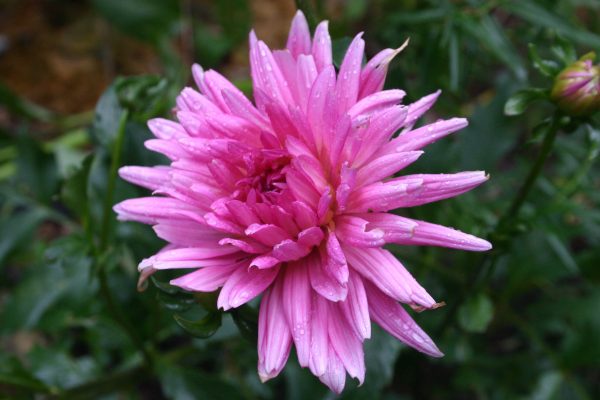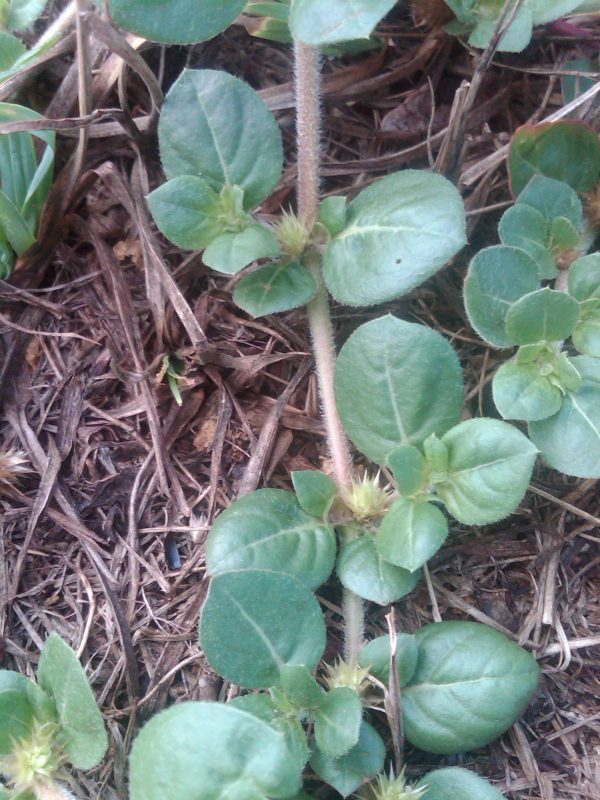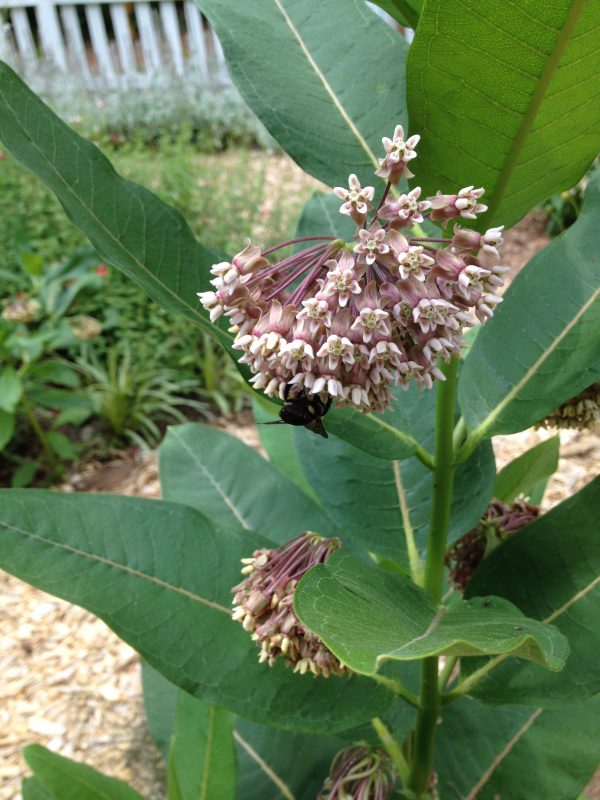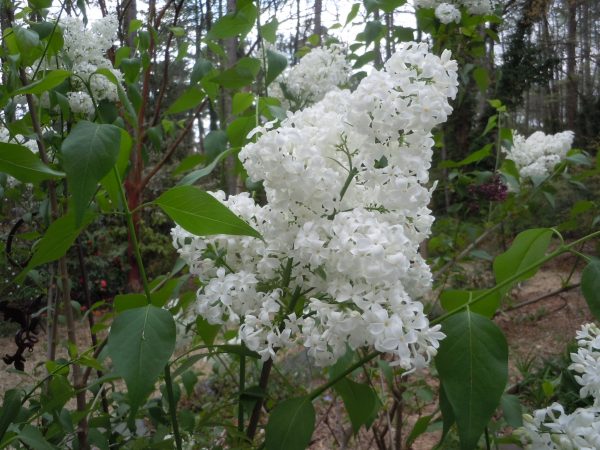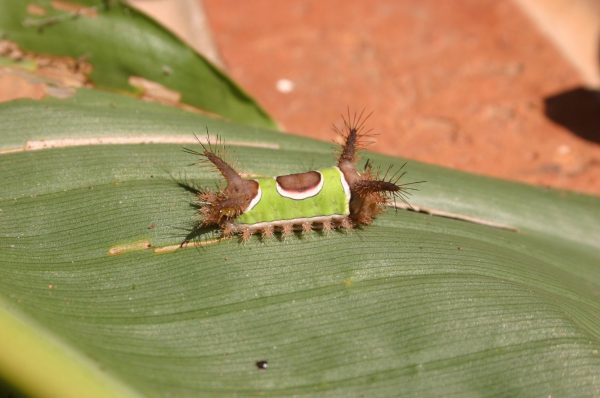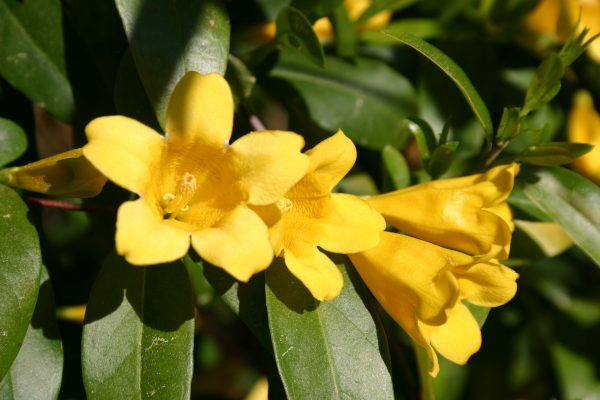Jerusalem Artichoke (sunchoke)
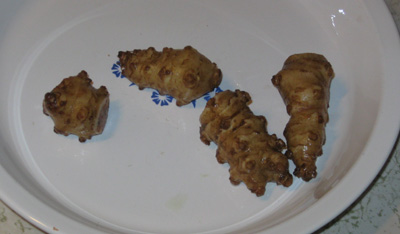
Helianthus tuberosus
This tall, fall-flowering perennial sunflower is native to the United States, and was used by native Americans used it as a staple food. It grows into a somewhat invasive mass of stalks up to ten feet tall, with bright yellow flowers just before frost in the fall.
• More detailed information can be found in The Georgia Fruit & Vegetable Book by Walter Reeves and Felder Rushing
• See also Jerusalem Artichoke
Its roots produce many fleshy tubers that look like small, knobby potatoes up to 3 or 4 inches long. Their high fructose/low starch content make them sought after by diabetic patients as a health food; however, this cannot be interpreted as a recommendation. They are peeled and eaten raw, boiled, or fried.
Sunchoke is perfectly adapted to all parts of the South, including the northernmost areas. Plant tubers in the spring, 2 to 3 inches deep in well-drained soil in an area of the garden that is sunny and the plant will have plenty of room to spread, and where its height won’t screen things you want to see.





